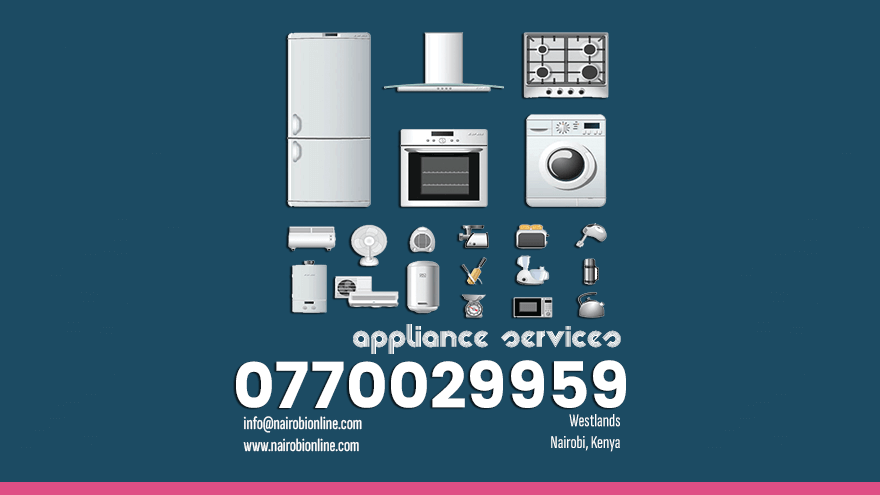Window Air Conditioners - AC HVAC Types, How They Work, Common Faults & Repairs
Window air conditioners are a popular choice for cooling individual rooms or small spaces, offering an efficient and cost-effective solution for maintaining indoor comfort. This article provides a comprehensive overview of window air conditioners, including their types within the HVAC (Heating, Ventilation, and Air Conditioning) spectrum, operational mechanisms, common faults, and repair strategies. For residents seeking reliable cooling options, such as window air conditioners in Nairobi, understanding these units is essential for optimal use and maintenance.
Types of Window Air Conditioners in the HVAC Category
Window air conditioners fall under the broader HVAC category as unitary systems designed for localized cooling. These units are self-contained, meaning all components—compressor, condenser, evaporator, and expansion valve—are housed within a single casing mounted in a window or a wall opening. Several variations exist, tailored to specific needs:
- Standard Window Units: These are the most common, available in capacities ranging from 5,000 to 24,000 BTUs (British Thermal Units), suitable for rooms of varying sizes.
- Inverter Window Units: Equipped with variable-speed compressors, these models adjust cooling output to maintain consistent temperatures, enhancing energy efficiency.
- Portable Window Hybrids: While primarily window-mounted, some units offer portability with adaptable venting kits, though they differ from fully portable ACs.
- Smart Window Units: Featuring Wi-Fi connectivity, these allow remote control via smartphone apps, appealing to tech-savvy users, including those seeking window air conditioners in Nairobi.
Each type serves distinct purposes, making them versatile for residential and small commercial applications in regions with warm climates.
"Energy-efficient inverter window air conditioners can reduce electricity consumption by up to 30% compared to traditional models, making them a sustainable choice for cooling."

How Window Air Conditioners Work
The operational principle of window air conditioners relies on the refrigeration cycle, a process that removes heat from indoor air and expels it outdoors. Key components include:
- Evaporator Coil: Located on the room-facing side, it absorbs heat from indoor air as refrigerant evaporates, cooling the air circulated back into the space.
- Compressor: This pressurizes the refrigerant, raising its temperature before it moves to the condenser.
- Condenser Coil: Positioned on the exterior side, it releases absorbed heat to the outside environment as the refrigerant condenses back into a liquid.
- Expansion Valve: This regulates refrigerant flow, reducing pressure to restart the cooling cycle.
- Fan: A dual-purpose fan blows cool air indoors and dissipates hot air outdoors.
For users of window air conditioners in Nairobi, where temperatures can soar, these units provide targeted relief by maintaining a consistent indoor climate. The simplicity of their design ensures straightforward installation and operation.
Common Faults in Window Air Conditioners
Despite their reliability, window air conditioners are prone to specific issues that can impair performance. Recognizing these faults is critical for timely intervention:
- Refrigerant Leaks: Low refrigerant levels due to leaks reduce cooling efficiency, often indicated by weak airflow or hissing sounds.
- Clogged Filters: Dust and debris accumulation restricts airflow, forcing the unit to work harder and potentially overheat.
- Electrical Failures: Faulty capacitors, thermostats, or wiring can prevent the unit from starting or cause intermittent operation.
- Drainage Problems: A blocked condensate drain leads to water leakage indoors, a frequent issue in humid areas like Nairobi.
- Compressor Malfunctions: Overheating or mechanical wear can cause the compressor to fail, halting the refrigeration cycle.
Regular maintenance can mitigate these problems, ensuring window air conditioners in Nairobi perform effectively during peak heat seasons.
"A clogged air filter can reduce a window air conditioner’s efficiency by 5-15%, emphasizing the importance of monthly cleaning for optimal performance."
Repair Strategies for Window Air Conditioners
Addressing faults promptly extends the lifespan of window air conditioners and maintains their cooling capacity. Below are practical repair approaches:
- Fixing Refrigerant Leaks: A certified technician should locate and seal leaks, then recharge the system with the appropriate refrigerant type (e.g., R410A or R32).
- Cleaning Filters: Remove and wash reusable filters with mild soap and water every 2-4 weeks, or replace disposable ones as needed.
- Electrical Repairs: Test and replace defective components like capacitors or thermostats using a multimeter to diagnose issues accurately.
- Clearing Drainage: Flush the drain line with a vinegar-water solution to remove blockages, preventing water overflow indoors.
- Compressor Troubleshooting: If the compressor fails, assess whether repair or replacement is cost-effective, as this is a high-value component.
For residents relying on window air conditioners in Nairobi, engaging professional HVAC services ensures repairs comply with safety and performance standards.
Maintenance Tips for Longevity
Proactive care enhances the durability and efficiency of window air conditioners. Key practices include:
- Regular Inspections: Check for unusual noises, vibrations, or reduced cooling to catch issues early.
- Seasonal Cleaning: Before peak use, clean the coils and fins with a soft brush or coil cleaner to remove dirt buildup.
- Proper Installation: Ensure the unit is level during installation to prevent drainage issues and structural strain.
- Annual Servicing: Schedule professional maintenance to inspect refrigerant levels, electrical systems, and mechanical parts.
These steps are particularly beneficial for users of window air conditioners in Nairobi, where dust and heat can accelerate wear if units are neglected.
"Annual professional servicing can extend the life of a window air conditioner by up to 5 years, offering significant cost savings over time."
Window air conditioners are a practical and efficient cooling solution within the HVAC domain, offering diverse types to suit various needs. By understanding their operational mechanics, recognizing common faults, and applying effective repair and maintenance strategies, users can maximize performance and longevity. For those in warm climates, such as individuals seeking window air conditioners in Nairobi, these units provide an accessible means to achieve indoor comfort. Whether opting for a standard model or a smart inverter unit, informed care ensures reliable operation throughout their service life.
This guide equips users with the knowledge to select, operate, and maintain window air conditioners effectively, ensuring a cool and comfortable environment year-round.